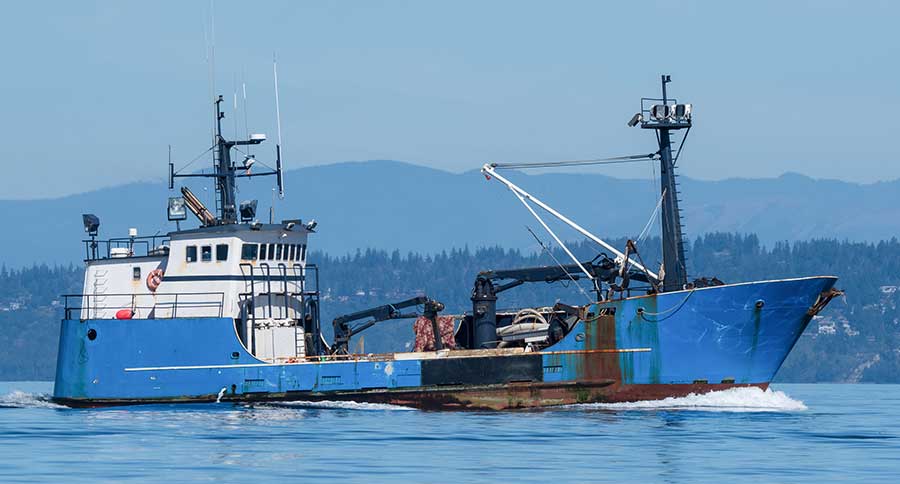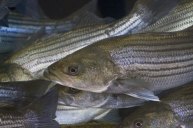Does the fishing industry really make money?
You may or may not have pondered this question while out recreational fishing at your favorite lake or while trolling off the coast of New England. While commercial hunting practices are something that died out in the 1800s in the name of conservation, commercial fishing persists to this day.
It seems like fishing should be a dying industry like many others. But it seems the commercial fishing industry is thriving.
Let's look closer at why that is. Let's also look at how sustainable the seafood industry is to our precious marine resources in the modern age.
Do commercial fishermen make money?
The simple answer to this question is yes. You may hear about hunter and angler numbers dropping. You've also probably noticed a lot more vegans around today than 10 years ago. But the demand for seafood is still there. According to the National Oceanic and Atmospheric Administration, commercial fishing accounted for $144 billion in sales in 2015 in just the United States alone!
According to the same NOAA report, this greater industry supported 1.2 million jobs that same year both on boats and through things like fish processing and shipping. The thing is all these numbers were considered a down year in most commercial fisheries!
Most of the fishing industry in the United States is based on the coastlines with west coast places like California, Washington, Oregon. Parts of New England also contribute heavily to U.S. fish markets. You also can't discount places like the Gulf of Mexico where fishing accounted for $3 billion in sales in Texas or Florida which saw nearly $28 billion in sales. Of course, we didn't forget about Alaska. The Last Frontier's fishing industry has of course, been made famous by reality TV shows like "Deadliest Catch," which highlight the challenge and danger fishing vessels there face while crabbing some of the most dangerous fishing grounds on the planet.
Of course, that $144 billion is the greater impact of fishing through grocery stores, equipment and things of that nature related to fishing. IBIS World has a more detailed snapshot of just the fishing industry. But even just looking directly at the men and women who catch for a living, fishing is expected to generate $11 billion this year supporting 73,221 jobs.
The stats for the global fishing industry don't lie either. The U.S. has nothing on China, which in 2004, had nearly 8 million people employed in the fishing industry. Some of China's stats include commercial fish farming operations, but it's still impressive when you hear the fisheries GDP was $45 billion in U.S. dollars there in 2004. They also have a fishing fleet of over 200,000 vessels.
Some countries, like Norway are seeing fewer people in the industry. But Norwegians still rely heavily on commercial fishing. No wonder old-school fishing communities can still be found in some places. Norway is considered one of the largest exporters of seafood in the world. In 2016, Norwegian fish brought in nearly $10.5 billion. That might not seem like much compared to the U.S. or China. But consider that the population of Norway is quite small at only five million. And it's even crazier when you consider that there are just over 11,000 full-time fishermen there now!
Demand for fish hasn't slowed
Even though there are fewer and fewer people who are career fishermen these days, the demand for commercially caught fish is still there. Feeding the ever-increasing population of the earth is a challenge and fish provide one of the solutions. The European Science Hub estimates demand for seafood has doubled in the last 50 years.
In 2011, the overall consumption of seafood, for both human consumption and other uses topped 154 million tons. Just sit there and think about that number for a little bit. Because it's mind-blowing. China accounted for most of this usage at around 65 million tons. Asian markets in general seem to account for much of the world's seafood consumption with markets in Japan, Indonesia and Korea being some of the top consumers of fish. We also can't discount places like Europe, who accounts for 13 million tons annually.
You may be wondering. If the demand is still there, why aren't more people in the fishing industry anymore? In truth, through my research I could find no good answers there on that. But going back to Deadliest Catch for a moment. If there is one thing that show did, it's showing the public at large just how tough life is for fishermen.
A fisherman must work long, hard hours on a fishing boat in some of the most unpleasant working conditions on the planet. There is also a certain amount of uncertainty with fishing. If your captain can't put you on the fish or crabs, well, you might not get paid. All that work you did was for naught.
Oh, and fishing is one of the most dangerous jobs on the planet. According to a Business Insider article last year, commercial fishing was the second most dangerous job in the U.S. Only commercial logging was more dangerous. What is wilder is that fishing is considered more dangerous than security, law enforcement, firefighting, farming and many other types of mechanical and industrial work.
To be fair, fishing has improved greatly on the safety front. In 2014, Alaska's commercial fishing industry went a full year without a single fishing related death. A huge milestone, especially considering six boats sank in that time period! But we believe the dangers are probably something that weighs on a fisherman's mind. Especially if they have a family.
When you start thinking about the dangers, combined with the long hours away from family and potentially more stable job opportunities out there, it's not hard to see why many fishermen and women start second-guessing life on a trawler. Because who really wants to be slinging heavy fishing gear around in freezing cold weather unless they truly love it?
How sustainable is commercial fishing?
It's a good question to ask with seafood demand skyrocketing worldwide. Again, I'll make a comparison to North America before they started to establish game laws that effectively eliminated market hunting in the late 1880s. It came too late for some species like the eastern elk, which was hunted to extinction. The poster child for unchecked take of game was the bison, which was nearly wiped off the planet forever.
Granted the oceans take up much more of the planet and it's going to be easier to wipe out resources there than on the water. But it's still something we should be thinking about. While researching this story I came across multiple pieces detailing concerns about overfishing. One of those on Science Daily noted that "global tuna catches have increased over 1000 percent in the past six decades, fueled by a massive expansion of industrial fisheries." That's concerning. Can you even imagine not being able to walk into a store and buy a simple can of tuna one day? We certainly can't.
Another example is the South China Sea, which has been dealing with their own issues as of late because studies have shown commercial fishing there has had a devastating effect on the fishery. This led to all sorts of tension between China and countries like Vietnam. China deployed armed coast guard vessels to the fishing grounds to push Vietnamese vessels out in some cases!
As the demand for fish grows worldwide, prices will only continue to skyrocket, and this kind of tension could become more common. The real question is, can the oceans replenish enough to keep up with demand? We're not sure. But these are things worth considering. And we should be thinking about fisheries management on a greater scale. Those who don't learn from the past are destined to repeat it right?
How does the recreational fishing industry fit into all this?
As most of you are aware, recreational fishing may be just as big, if not bigger, than commercial fishing. Remember that NOAA report I mentioned earlier? The one that said commercial fishing accounted for $144 billion in sales here in the United States? Well, when you add in recreational fishing to that total, it balloons to $208 billion in sales!
But if you want a good look at the impact recreational fishing has, look at Minnesota. The Land of 10,000 lakes gets a good deal of their tourist money from visiting fishermen. Two years ago, the state put out a series of infographics describing the impact.
Among the highlights was the fact that anglers spend $1.8 billion in the state on recreational fishing each year! Things like bait accounted for $50 million alone. Tackle, lures and fishing line accounted for another $34 million. Fishing was also found to support 55,000 jobs in the state with the economic benefits going to gas stations, motels, campgrounds and resorts as well as the usual guide services and local bait shops.
Again, that's just Minnesota. We imagine other prime fishing destinations like the trout stream of Colorado and Montana, the surf fishing destinations of the Carolinas and the saltwater paradise of Florida produce similar numbers.
All told, it's safe to say both commercial and recreational fishing make a ton of money and we don't see either sport going anywhere anytime soon as a result of it!
For more outdoor content from Travis Smola, be sure to follow him on Twitter and check out his Geocaching and Outdoors with Travis Youtube channels.
NEXT: IS THE NEW ENGLAND FISHING INDUSTRY FADING AWAY?
WATCH




